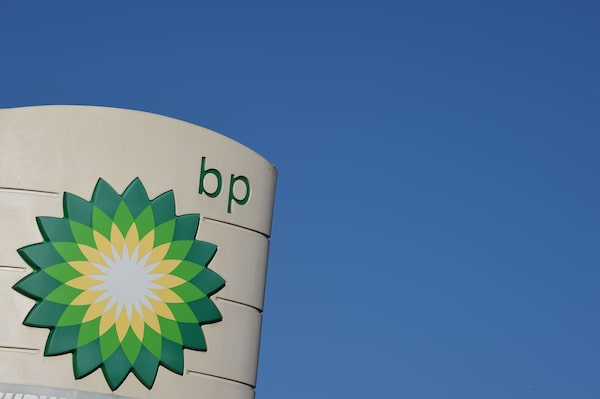
PAUL ELLIS/AFP/Getty Images
BP PLC will write off up to US$17.5-billion from the value of its assets after cutting its long-term oil and gas price forecasts, betting the COVID-19 crisis will cast a lasting chill on energy demand and accelerate a shift away from fossil fuels.
Like its rivals, the British oil major is set to take a big hit to revenue from an unprecedented collapse in demand owing to the pandemic. The impairments are set to raise its debt burden sharply and increase pressure to reduce its dividend.
The move comes as chief executive Bernard Looney prepares to outline his strategy in September to “reinvent” BP, including a reduced focus on oil and gas and a larger renewables business.
BP lowered its benchmark Brent oil price forecasts to an average of US$55 a barrel until 2050, down by around 30 per cent from previous assumptions of US$70.
The outlook is the lowest among Europe’s top energy companies, according to Barclays research.

Reuters
REVIEW OF PROJECTS
BP said that the aftermath of the new coronavirus pandemic would accelerate the transition to a lower-carbon economy, in line with the goals of the 2015 Paris Climate Agreement.
“We have reset our price outlook to reflect that impact and the likelihood of greater efforts to ‘build back better’ towards a Paris-consistent world,” Mr. Looney added.
BP shares fell 2.2 per cent in London on Monday.
Last week, BP said it would cut about 15 per cent of its work force in response to the coronavirus crisis and as part of Mr. Looney’s strategy.
BP said the new price assumptions will lead to non-cash impairment charges and write-offs in second-quarter earnings, due on Aug. 4, in a range of US$13-billion to US$17.5-billion after tax. It said it would also now review its plans for some oil and gas projects that are at early exploration stages.
The impairments include US$8-billion to US$10-billion worth of write-offs in the company’s early-stage oil and gas exploration, covering projects that the company has now decided to axe. Its overall early-stage projects were worth US$14.2-billion at the end of March.
BP will write down another US$8-billion to US$11-billion of the value of so-called property, plant & equipment (PP&E), or producing assets, which totalled US$130-billion.
BP is set to increasingly shift its fossil-fuel production from oil to natural gas, which is expected to play a key role in supplying increasing demand for electricity.
However, in its new outlook, BP revised down its assumption for gas from Henry Hub in the United States by 31 per cent to US$2.90 per million British thermal units.
It also increased the assumed price it will have to pay governments for carbon dioxide emitted from its oil and gas activities to US$100 for each tonne of CO2 in 2030, from US$40.
DEBT AND DIVIDEND
The large impairments will lower BP’s asset value by around 10 per cent, pushing the ratio of equity to debt, known as gearing, to about 48 per cent n the second quarter, RBC Dominion Securities said in a note.
At such levels, the company will need to lower its dividend, the bank said.
Investors have increased pressure on oil companies to lower carbon emissions to net zero by the end of the century. BP and its European rivals have in recent months outlined plans to sharply reduce their emissions by 2050, although how exactly they will get there remains unclear.
Charlie Kronick, senior climate adviser for Greenpeace UK, said BP’s price revision was “long overdue.”
“Accelerating the switch to renewable energy will be vital not only to the climate but to any oil company hoping to survive in a zero carbon future,” he added.
Be smart with your money. Get the latest investing insights delivered right to your inbox three times a week, with the Globe Investor newsletter. Sign up today.